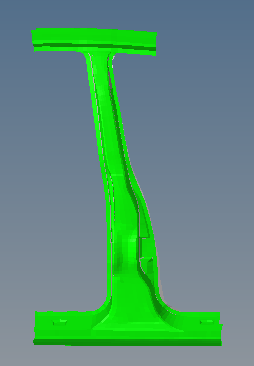Hi,I am sorry to ask questions again. Now I am studying the structural optimization design of the automobile B-pillar. This time, there are about three minor problems to be solved.
1. I don't know how to set the variable thickness shell element. I saw the following method to set the variable thickness unit in a journal. Setting different thickness simulation shells for the four nodes of the shell element, but I don't know how to achieve it. Can you give me some advice?
2. Since currently optimized based on the B-pillar, the B-pillar components are taken out of the vehicle as shown in the following figure. How do you impose constraints on the upper and lower ends to simulate the vehicle constraints as much as possible? In other words, how to apply constraints to the B-pillar to simulate the constraints in a real vehicle.?
3. Can the size optimization in Optistruct set the coordinate value to the design variable? In addition, can velocity load be applied in optistruct?
Thank you in advanced.
